FCAW vs GMAW: Differences, & When to Use Them
Last Updated on
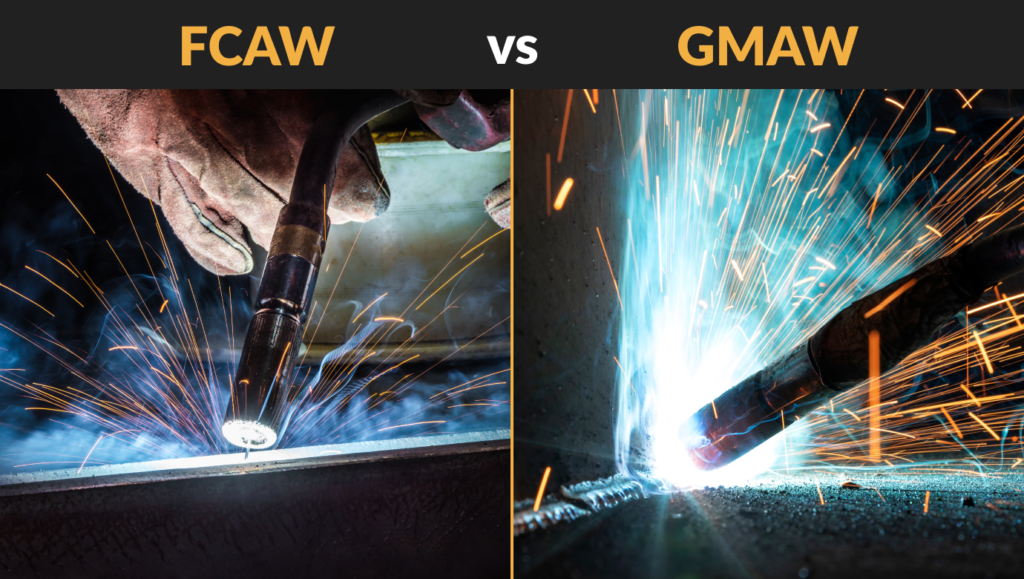
Introduction
When choosing a welding process, whether for a side gig or a home project, two of the best and easiest processes are FCAW (Flux-cored Arc Welding) and GMAW (Gas Metal Arc Welding). These two processes are designed for laying down quality welds and generally require less training than some more complicated processes. Both FCAW and GMAW use a welding gun and wire feed system to deposit filler metal into the weld zone. Not as much electrode manipulation is required as in Stick welding or TIG welding.
These processes have a lot in common, but we’re going to go a bit deeper and discuss not only what they have in common but the differences as well.
Overview of FCAW:
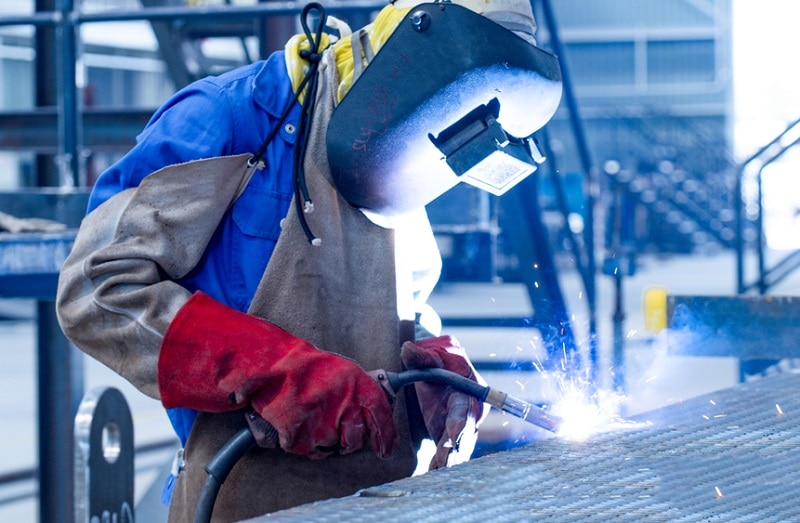
This process was first developed in the 1950s to improve efficiency in production environments, gradually replacing the use of SMAW for shop production. FCAW uses a constant voltage current from a welder inverter machine. This means that the voltage more or less stays the same regardless of the wire speed or amperage changes. The machine has a wire feed system connected. Sometimes it is attached to the main structure, and other times it may be free-standing.
One welding lead will attach to the workpiece, forming one end of the circuit. The other end is the electrode end. A welding lead (commonly referred to as a whip) and gun are attached to the wire feeder so the machine can feed the wire through the gun. At the tip of the gun, there is a piece of copper called a contact tip, which has a hole through which the welding wire passes. Depending on whether or not shielding gas is used with FCAW, it may or may not have a nozzle. The nozzle is used to direct the shielding gas to the work area from a gas diffuser found just below the contact tip on the gun.
How It Works
The operator uses the welding gun on a given setting and pulls the trigger on the desired area of the workpiece. The wire feeds and strikes the arc between the wire itself and the workpiece. The arc’s heat begins to melt the workpiece and the wire simultaneously. The workpiece melts so that the filler metal from the wire, which is deposited, causes a more secure fusion, as opposed to simply laying on melted filler metal.
While the wire is melted, the flux in the center of the tubular wire turns into a gas shield and leaves a slag to protect the weld from outside contaminants. The remaining slag is then chipped off of the weld upon completion.
There are two types of FCAW processes. The first is called self-shielded (FCAW-S), where the flux of the wire is sufficient to create protection from the atmosphere. In this case, the welding gun is sometimes different in that it doesn’t require a gas diffuser.
The second is called dual shield (FCAW-G). This process requires a diffuser and nozzle. The most common shielding gas used in dual-shield welding is carbon dioxide. Sometimes a mix of carbon dioxide and argon is used, but the former is usually preferred for economic reasons. This gives the weld additional protection.
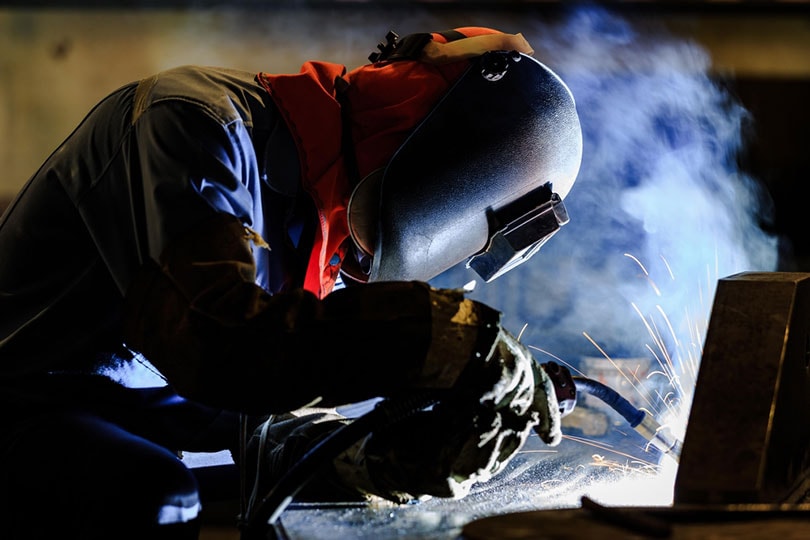
What It’s Good for and When To Use it
FCAW is often used for structural steel applications (AWS D1.1). Contractors will usually do as much structural steel welding in the shop as possible since productivity tends to be lower in the field due to environmental constraints. When the columns, frames, or whatever component is welded in the shop, welders use dual shield; It tends to be cleaner and easier to weld.
When they weld in the field, welders typically use stick or self-shielded FCAW. This is because it is designed to weld in heavy wind and even more extreme conditions. Dual shield does not work well in these scenarios since the wind or even a small breeze can blow away the shielding gas, causing weld defects.
If you need to weld outside on your property, repairing farm equipment, for example, self-shielded FCAW will work best. If you use the equipment inside, you must have proper ventilation; the smoke has to have somewhere to go.
- High weld deposition can produce a lot of welds quickly
- User-friendly: less skill required compared with stick or TIG
- Less cleaning of base material required
- Flux burning can cause a lot of fumes that require more ventilation
- Cleanup: slag can cause a bit of a mess
- More equipment required than simpler setups
Overview of GMAW:
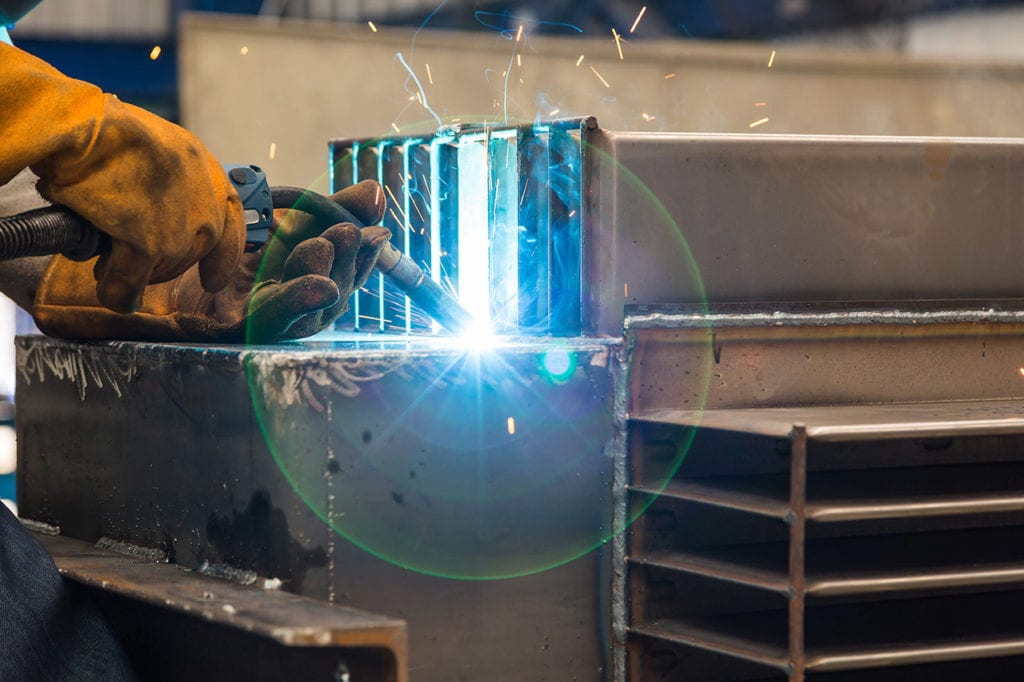
GMAW (Gas Metal Arc Welding), also called MIG (Metal Inert Gas), mostly uses the same setup as FCAW. Both use constant voltage, wire feeders, guns, etc. However, MIG does not at any time use flux in the wire. The wire is made of the same metal as the base material, with some exceptions.
The shielding of the weld pool is provided by gas such as argon or carbon dioxide. With GMAW, different gas mixes are more common depending on the type of material and the application. For example, while mild steel may be welded with 75% carbon dioxide and 25% argon, a mixture of argon and helium can be used when welding aluminum.
How It Works
GMAW works essentially the same way that FCAW does. The main differences are that it does not require flux but uses shielding gas. Since there is no flux, this also means that there is no slag. It makes cleanup a lot easier. However, you will usually see at least some apparent residue on top of the weld. These are silicon deposits that are leftover from the wire. They are hard to remove but virtually harmless to the integrity of the weld.
There are four different types of GMAW welding; the first is probably the most common and easiest to learn. Short-arc transfer creates a relatively small weld puddle that freezes quickly. It also uses the lowest voltage compared to the other processes. It is best for thinner gauge materials.
Globular transfer is similar to short arc, except the wire is heated for longer causing larger droplets of metal to drop at one time into the weld pool. Spray arc transfer is characterized by a continuous stream or spray of droplets into the weld zone.
Pulse arc is a sort of spray transfer. It is called pulse because it “pulses” the voltage up and down during the transfer of filler metal. This pulsing pushes the metal across the arc into the puddle and simultaneously keeps the overall temperature down: a common problem with standard spray arc.
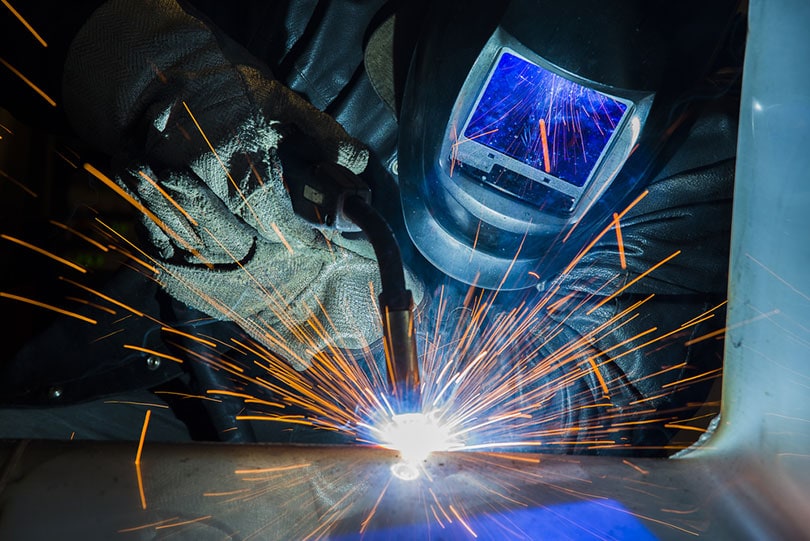
What It’s Good for and When to Use It
While FCAW is usually used for larger structural applications, GMAW is preferred in fabrication environments. Building handrails and welding together smaller metal components are a perfect job for GMAW. Almost invariably, GMAW needs to be used indoors since the wind will render the shielding gas useless outdoors. Even indoors, if a light breeze or fan is blowing, you will often need a wall or welding screen to protect your weld.
At home, if you are welding something that can be brought into the garage or protected from the weather, GMAW will usually work. It’s also important that you remove any paint or grease before you weld, especially with GMAW.
- No slag to worry about for cleanup
- Easiest process to pick up and learn
- Versatility: can weld on steel, stainless steel, aluminum, and more
- Less suited to structural welding or heavier duty projects
- Particular environment required
- Need to clean base material well
Frequently Asked Questions (FAQs)
Can You GMAW Weld Without Gas?
Just as you can’t weld FCAW dual shield without shielding gas, you cannot weld GMAW without shielding gas. The wires for both processes are designed to be used with a layer of protection for the weld.
So, what happens when you weld without shielding gas? Not only will you notice the Swiss cheese of porosity immediately when you lift your hood, but you will also hear extra crackling and spattering as soon as you start welding. Welds with excess porosity do not last, especially if the component is exposed to the weather. Water and other foreign contaminants will slowly (or not so slowly) damage the weld.
What Metals Can Flux Core Weld?
Though the most common application of FCAW is for welding mild steel, it also can be used on other types of steel, such as stainless and some nickel-alloyed steel. While steel is best suited to be welded by FCAW, some electrode wires are made to weld aluminum, but it is far more common to see aluminum welded with MIG or TIG welding.
What Else Is Flux Used For?
In addition to protecting the weld pool from outside contaminants, the flux also helps clean a certain degree of the residue off of the base material. Debris left over from the manufacturer, like small amounts of grease, dust, and mill scale (the flake-like layer of oxidization which results in steel production), can be burned off with the assistance of the flux or will be brought up into the slag which will then be chipped away.
Even though flux-cored welding handles dirty material relatively well, it is still recommended that you prepare and clean your base material when possible. At times it may not be possible. For example, if someone is welding a blind corner on a column in the field and they could not get a grinder into their joint to clean it. But in specific structural steel codes, depending on the type of weld, the mill scale will need to be entirely removed to reveal the sheen of the metal to ensure proper joint penetration of the weld.
Can Flux Core Welding Make You Sick?
Nearly all welding processes entail a certain degree of risk; you are dealing with 10,000°F temperatures and high voltage power sources. Another risk factor is the fumes produced by welding. GMAW produces fumes while welding but does not produce as much as FCAW.
The flux provides a benefit to the weld, but it also causes toxic fumes. Welding flux has been labeled as carcinogenic. You will often see warning labels that “this product has been linked to cancer.” Therefore, it is vital to have proper ventilation and a respirator when possible. Cancer may not manifest until years down the road, but if you spend a day welding without ventilation, you may start to feel nauseous or get a mild to moderate headache.
Final Thoughts
Both FCAW and GMAW are pretty user-friendly and easy to learn for home use. If you need to do a project outside on something steel, flux core is the way to go. If you are welding inside and don’t mind tending to a small cylinder of shielding gas in addition to your machine, MIG is better because it will cause fewer fumes.
Featured Image Credit:
